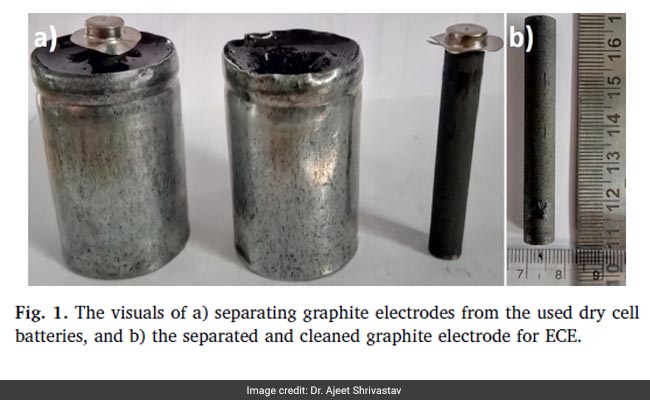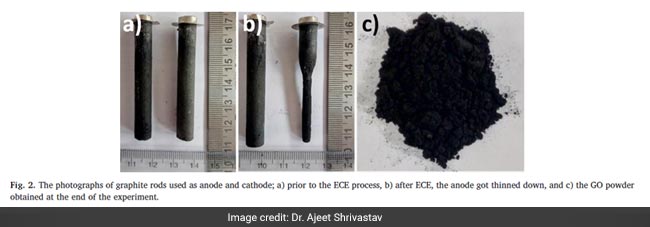New Delhi: The most common e-waste, which could be found in almost any household, is dry-cell battery. Usually in India, we throw out the dry cell batteries in the dustbins and according to Nagpur-based Visvesvaraya National Institute of Technology’s (VNIT) researchers that is the possibly the worst way to discard them.
India is the fifth largest e-waste producer in the world after countries like United States, Japan, China, and Germany, as per the Global E-waste Monitor 2017, published by the United Nations University. The report also states that India generates about 2 million tonnes of e-waste annually. However, there is no government data on e-waste generated in the country.We often throw away the e-waste without paying much attention to where it will land up next. It’s the next big threat to the environment followed by plastic.
The dry cell batteries end up in landfills and could stay there for more than a hundred years.
Dr. Ajeet Kumar Srivastav along with his group of researchers, Suresh Bandi, Vikram Hastak and D.R. Peshwe from VNIT has developed a new technique which claims to help produce high value graphene from discarded dry cells batteries.
Graphene, a form of carbon, is transparent and flexible conductor that has plenty of uses like in making solar cells, strong and durable touch-screens for smartphones, electronic chips, among others. It is made out of graphite and the production of graphene is both expensive and has significant environmental impact. Often referred to as ‘new wonder material’ by scientists globally, it is expected to shape almost all aspects of future technologies.
A typical dry cell battery has a graphite rod at the centre, which acts as the positive electrode or cathode. Dr. Srivastav’s team has developed a technique to produce graphene from graphite rods in used batteries.
We have achieved 88% yield of graphene from a single graphite rod. It can be scaled up to the industrial level. We have filed a patent on this work, said team leader Dr. Ajeet Kumar Srivastav.
The group has also started using graphene produced from batteries for different applications by functionalising it with metal oxide nanostructures. They have also developed a composite with titanium oxide, which has proved to be effective as a sensor for carbon monoxide gas.
The material was tested on samples with carbon monoxide concentration of up to 100 parts per million and it worked well, Dr. Srivastav said.
Also Read: 50 Per Cent Indians May Be Hoarding E-Waste For Up To Five Years, Reveals A Survey
When asked about the advantages of Graphene, Mr. Srivastav explained that its supercapacitors serve as energy storage devices with a capacity for faster charging and longer lifespan than traditional electrolytic batteries.
Graphene consists of a single layer of carbon atoms arranged in a hexagonal lattice. It is the strongest material to be ever tested that conducts heat and electricity efficiently, he added.
NDTV – Dettol Banega Swachh India campaign lends support to the Government of India’s Swachh Bharat Mission (SBM). Helmed by Campaign Ambassador Amitabh Bachchan, the campaign aims to spread awareness about hygiene and sanitation, the importance of building toilets and making India open defecation free (ODF) by October 2019, a target set by Prime Minister Narendra Modi, when he launched Swachh Bharat Abhiyan in 2014. Over the years, the campaign has widened its scope to cover issues like air pollution, waste management, plastic ban, manual scavenging and menstrual hygiene. The campaign has also focused extensively on marine pollution, clean Ganga Project and rejuvenation of Yamuna, two of India’s major river bodies.






























